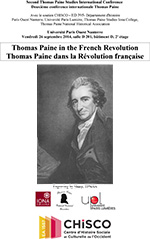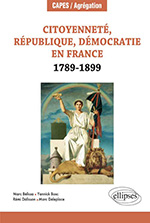A Descent upon England by Gunboat : Reconciling Paine’s Interventionism with Small Military Forces Etudes

par Thomas C. Walker, Department of Political Science, Grand Valley State University
Texte préparatoire à la Deuxième conférence internationale Thomas Paine, Thomas Paine dans la Révolution française, Université Paris Ouest Nanterre, vendredi 26 septembre 2014, (CHISCO-Paris Ouest Nanterre, Université Paris Lumière, Thomas Paine Studies Iona College, Thomas Paine National Historical Association).
Draft copy, comments will be appreciated.
Introduction
Few can point to a more bizarre after-death story than Tom Paine’s. Like most good stories, it is hardly diminished by its re-telling. After the fame he enjoyed during the American and French revolutions faded, Paine died and was buried in a simple grave in New Rochelle, New York. He did not, however, rest in peace. William Cobbett secretly disinterred the remains and transported them back to England. Cobbett wanted to commemorate Paine’s final resting place with a fitting monument to his political importance. But, as is the case with many efforts to celebrate and promote radical ideas, the project ran short of money. The monument was never built and what became of Paine’s remains has been reduced to speculation. One account tells of how his bones were refused for sale at auction in 1835, after which a Unitarian clergyman kept Paine’s skull and right hand in his library (Ayer 1988, 182). Another tells of an old woman who played with Tom Paine’s jawbone when she was a child (Fruchtman 1994,435). Two-hundred years after his death, Paine’s words live on, but, like his bones, they are largely scattered and turn up in the most peculiar places. These range from the songs of Bob Dylan to presidential speeches of Ronald Reagan (1).


